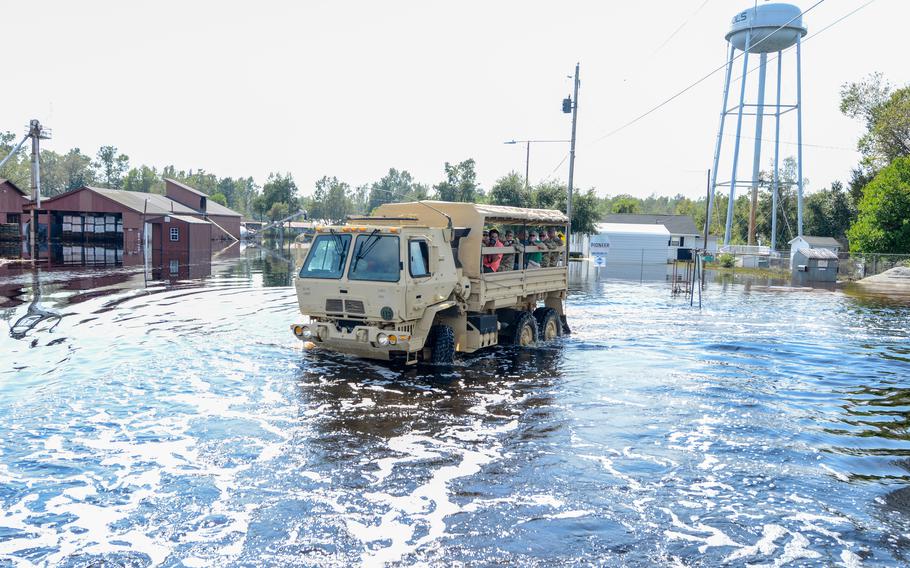
The South Carolina National Guard assesses damage from Hurricane Florence on Sept. 22, 2018. (Jorge Intriago/U.S. Army National Guard)
SAN FRANCISCO — Google on Wednesday said it is providing artificial intelligence tools to help the National Guard analyze images of disaster areas so it can respond to them faster and more effectively.
Bellwether, a new group inside “X,” the innovation lab that is part of Google’s parent company Alphabet, has developed tech that can ingest photos taken at an angle by airplanes, compare them with satellite imagery and maps, and automatically identify locations, roads, buildings and other important infrastructure. Bellwether has been testing the tech with the National Guard, which will deploy it in time for the summer wildfire season, said Nirav Patel, a program manager with the Defense Innovation Unit (DIU), a Pentagon unit that helps the military integrate commercial technology and that helped organize the partnership.
Up until now, the National Guard — which coordinates the military’s response to tornadoes, floods, earthquakes and wildfires inside the United States and its territories — has had to rely on human analysts poring over aerial photos to figure out specifically which areas, buildings and infrastructure have been damaged after a disaster before being able to direct the right resources to the right places.
What used to take hours or days now takes just seconds, said Patel. He said he expects the tech to only become more important. “As climate change is impacting different parts of the Earth’s surface, the [Defense Department] is being pulled in,” Patel said. “We unfortunately only see that increasing.”
The collaboration between Bellwether and the National Guard shows how Silicon Valley is working more closely with the Defense Department. Though military funding and the space program were integral to getting Silicon Valley up and running in the 1950s and 1960s, few tech founders in recent decades have built companies with the goal of serving the military. The DIU was set up in 2015 to try to close that gap and find a way to cut through bureaucratic procurement processes and get the tech industry to work more closely with the Defense Department.
More recently, a new wave of Silicon Valley tech companies, including drone maker Anduril and AI company Shield AI, have begun building tech specifically for the military, casting themselves as patriots aiming to arm the U.S. military to retain its dominance through the 21st century. Venture-capital funding for defense tech startups is growing.
Google has a complicated history with the U.S. military. In 2018, the company walked away from a contract to build AI image-recognition tools for the Pentagon after employees protested the deal. But since then, it has steadily returned to military work and was one of four companies awarded a massive $9 billion contract to build cloud services for the Defense Department.
Spokespeople for both the DIU and Google X said that the AI would only be used domestically within the United States and its territories, and for disaster response, not military action.